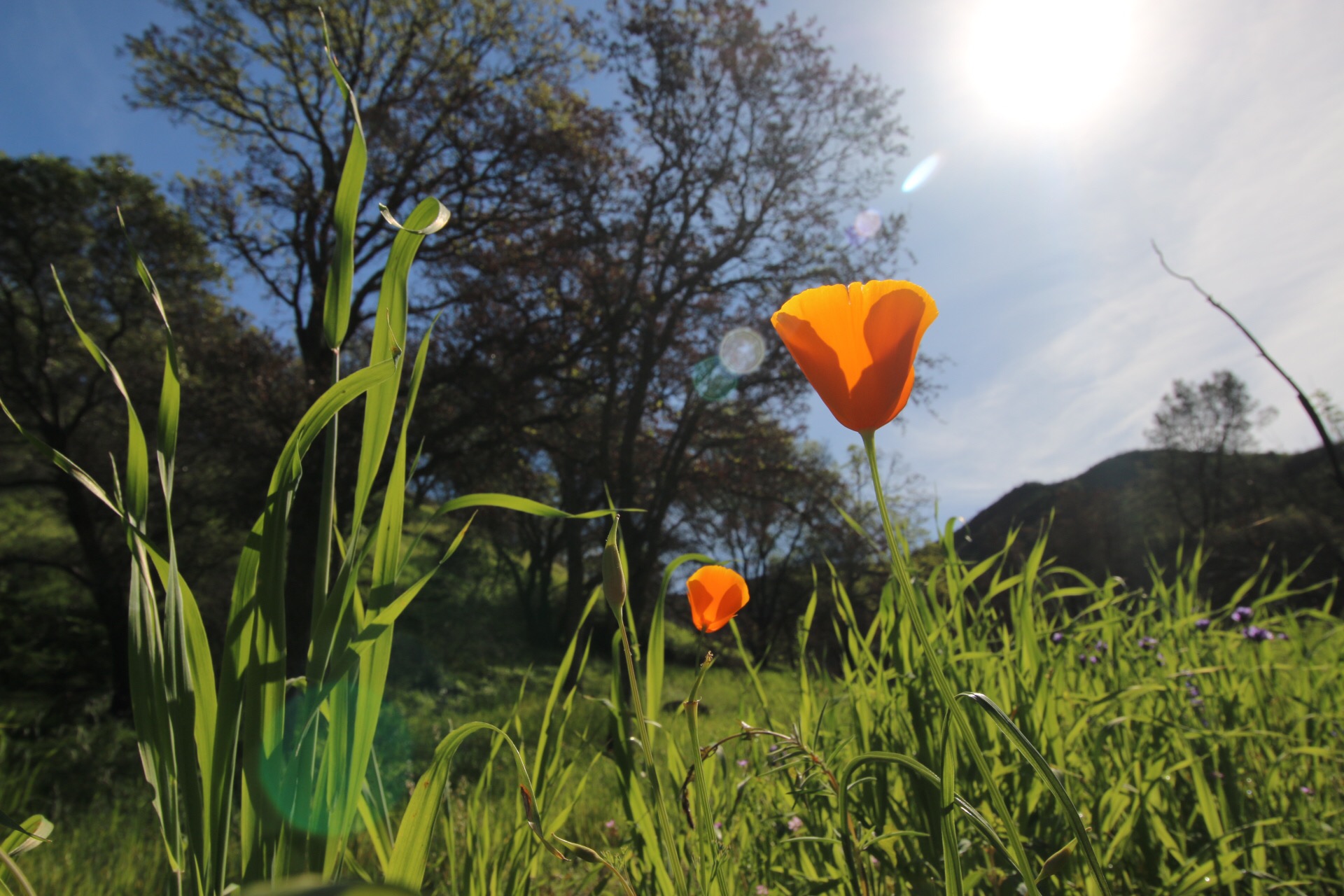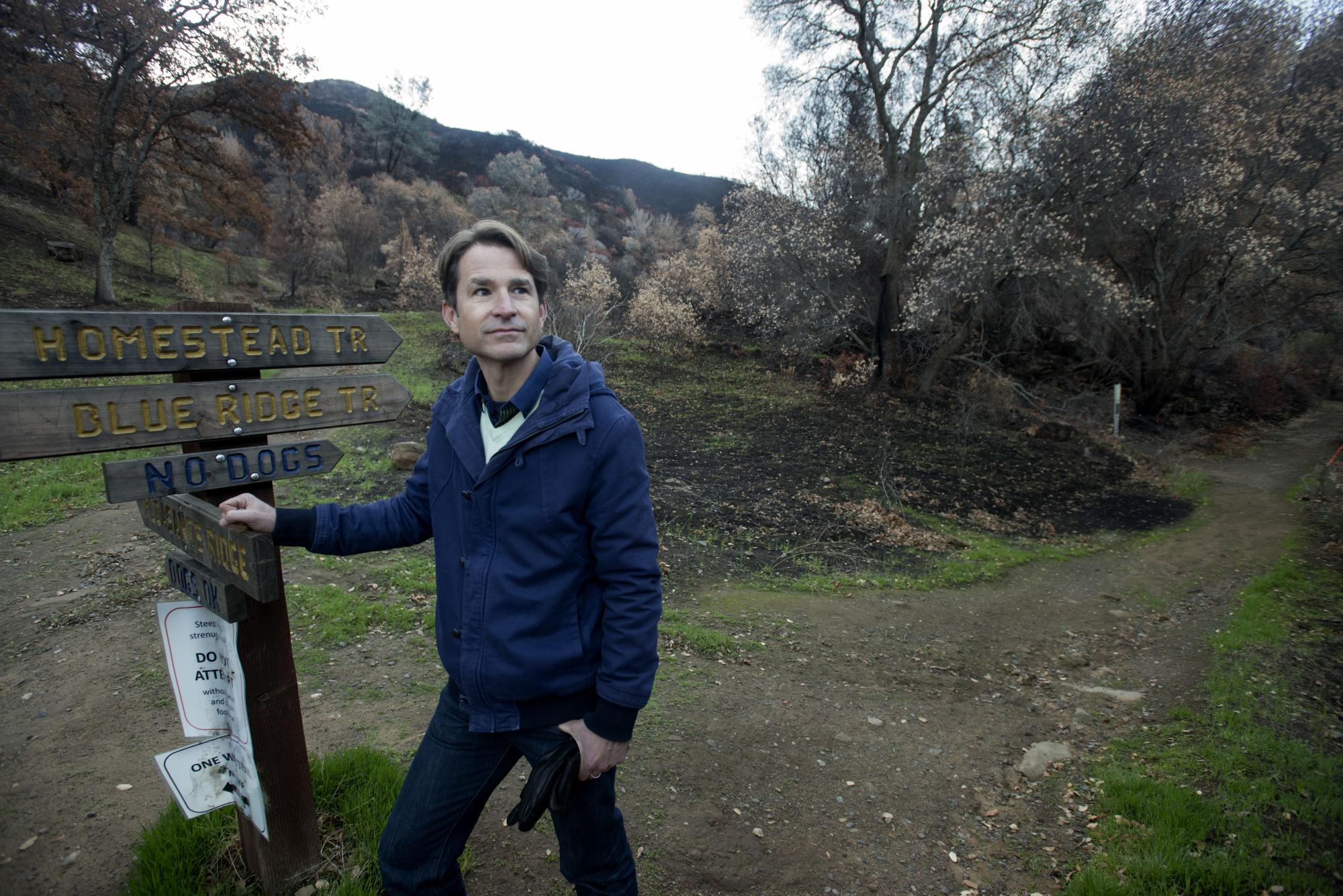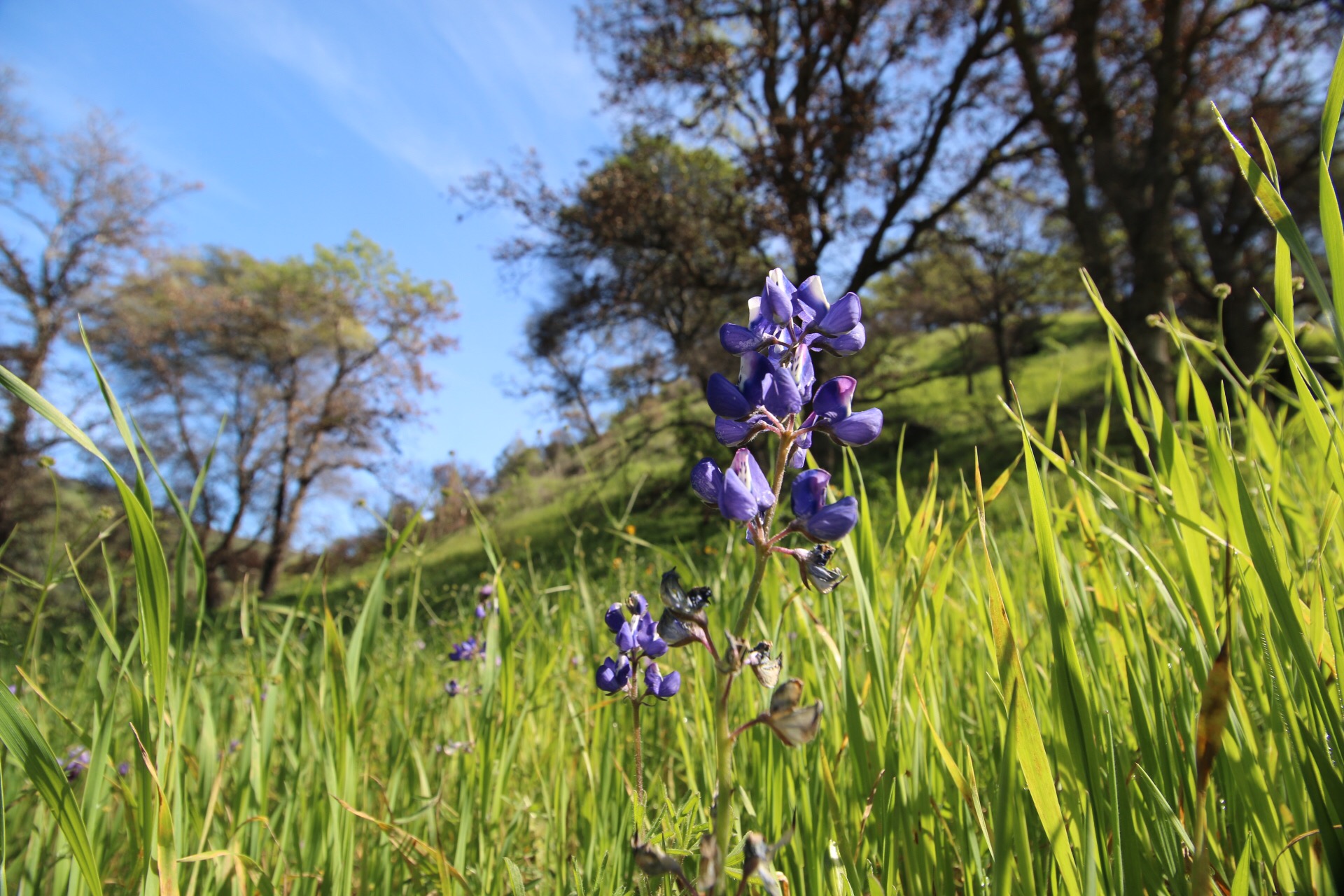Quick Summary
- The reserve reopens Sunday, May 15, from sunrise to sunset
- New parking area, signage and restored trails among the changes
- The Wragg Fire burned the reserve on July 22, 2015, forcing its “time out”
- Recreationists share Stebbins with scientists; postfire ecology among current research
Nearly one year after the Wragg Fire burned UC Davis’ Stebbins Cold Canyon Natural Reserve and forced its closure, the reserve will reopen to the public this weekend, May 15, from sunrise to sunset.
When the Wragg Fire ignited on July 22, 2015, the 638-acre reserve was first in its path. It ripped through the reserve, burning cottonwoods, thick patches of chaparral, iconic blue oaks and railroad ties built into the trail.
Before the fire, the reserve served as an outdoor laboratory and classroom for students and scientists from UC Davis and elsewhere. Located just about 30 minutes west of Davis and bordering the newly designated Berryessa Snow Mountain National Monument, it is also a locally beloved natural space, welcoming roughly 65,000 visitors each year.

“The fire has been a reset button,” said Jeffrey Clary, Stebbins Cold Canyon Natural Reserve director. “We have the chance to build a culture of learning and respect for the resource with our visitor community.”
A few changes
Natural Reserve System staff members have worked closely with UC Davis students as well as with volunteers from other regional groups dedicated to the outdoors, such as the nonprofit Tuleyome. Together, they have helped restore trails, build steps that burned in the fire, remove brush and relocate the parking area.

Returning visitors will find much that is familiar, but there are some key changes:
- Parking. Visitors will no longer need to cross the highway to get from their car to the reserve. Pay attention to new signage that guides visitors to a new parking area below the entrance.
- Construction. Some construction is still in progress, such as fencing and signage. Reserve staff asks for patience as more permanent changes are made.
- It will be hotter. While much of the fire’s blackness has given way to greenery, the absence of several trees means there is less shade than before. People should bring plenty of water, wear a hat and try to avoid visiting during the hottest parts of the day.
- No dogs. The reserve is a protected research site, and dogs are not allowed on the trail.
Wragg to riches
While the wildfire presented several challenges to Stebbins Cold Canyon Natural Reserve, Clary said it also presented some opportunities.
“The fire gave us a chance to do trail work that’s hard to do when you have a large number of public out there,” Clary said. “It gave us the open space to revisit the parking situation and access to the site. All of those things were able to happen because the place got a time out.”

Stebbins Cold Canyon is one of 10 natural reserves in the UC system and one of the few open for public recreation. Scientists use UC Natural Reserves as outdoor laboratories and classrooms, researching everything from wildlife health to water quality, climate change, plant sciences, entomology and land management.
Since the fire, scientists have also begun a number of postfire ecology research projects, which could help Western states better understand and prepare for wildfires in the future.
Media Resources
Kat Kerlin, UC Davis News and Media Relations, 530-750-9195, kekerlin@ucdavis.edu
Jeffrey Clary, UC Davis Natural Reserve System, 530-752-9178, jjclary@ucdavis.edu